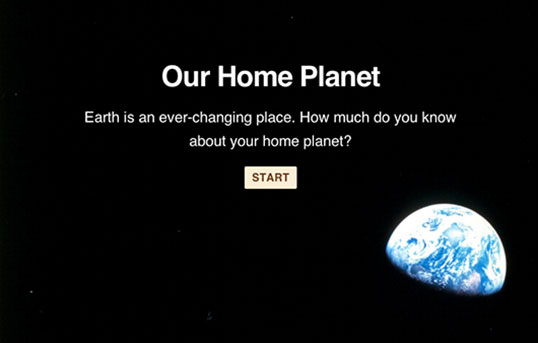MULTIMEDIA
Quiz: Our home planet

Earth is an ever-changing place. How much do you know about your home planet? Take our quiz.
Browse our collection of climate-related quizzes here.
Credit
NASA Climate Change website

Earth is an ever-changing place. How much do you know about your home planet? Take our quiz.
Browse our collection of climate-related quizzes here.
NASA Climate Change website
